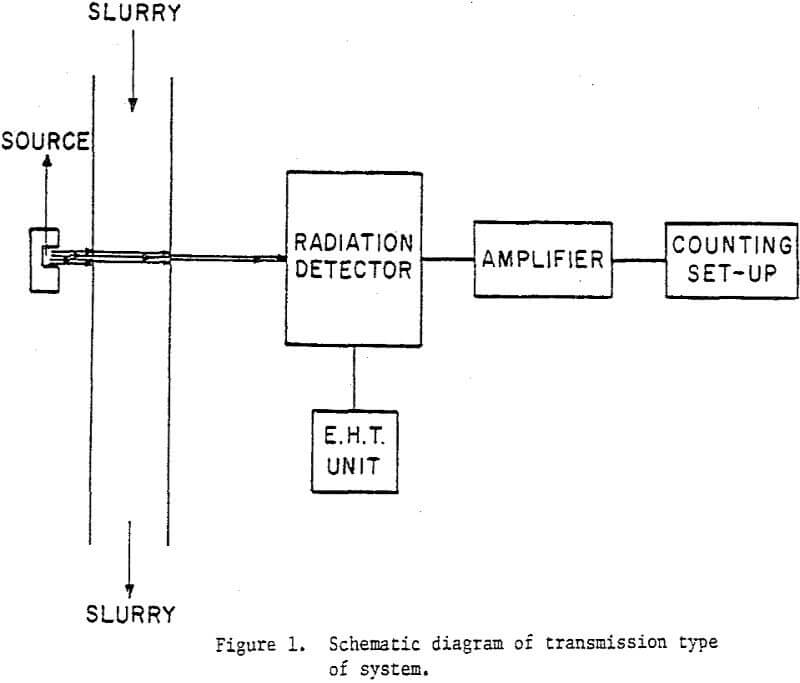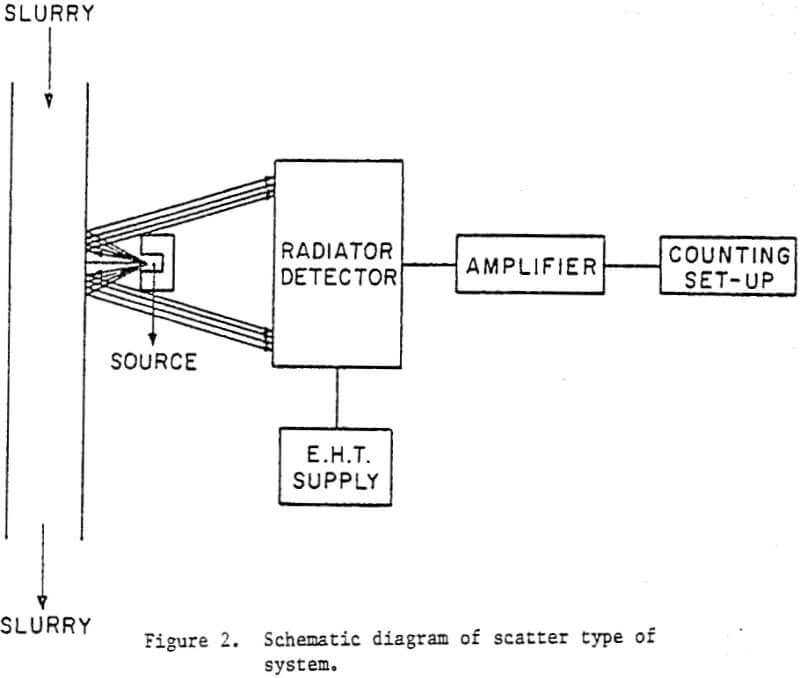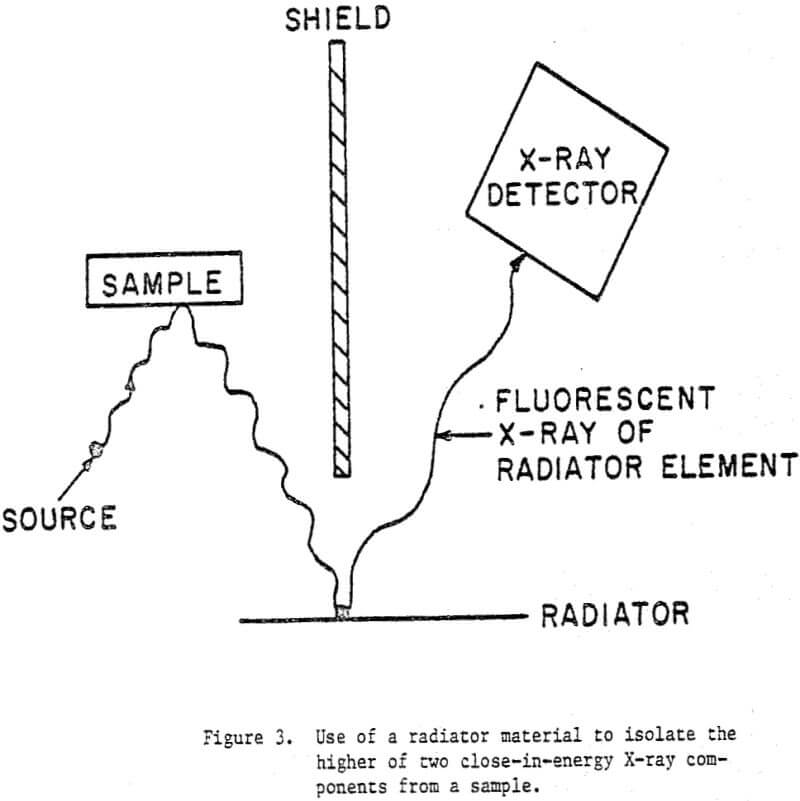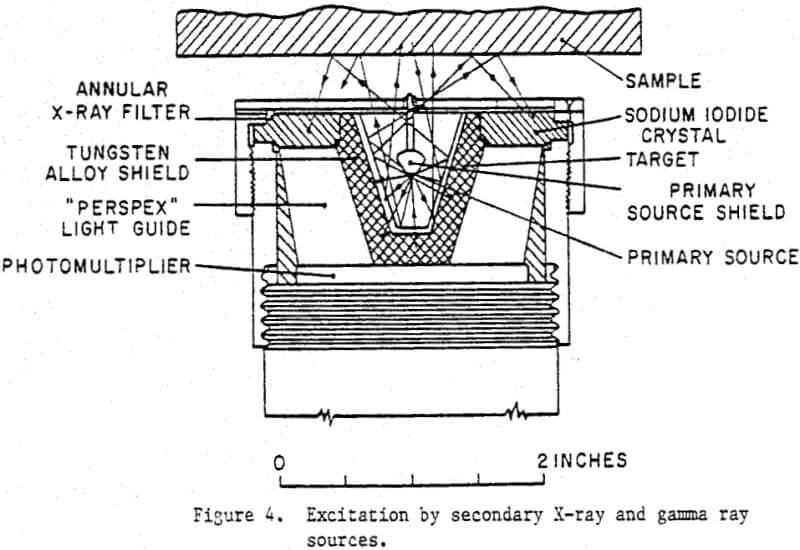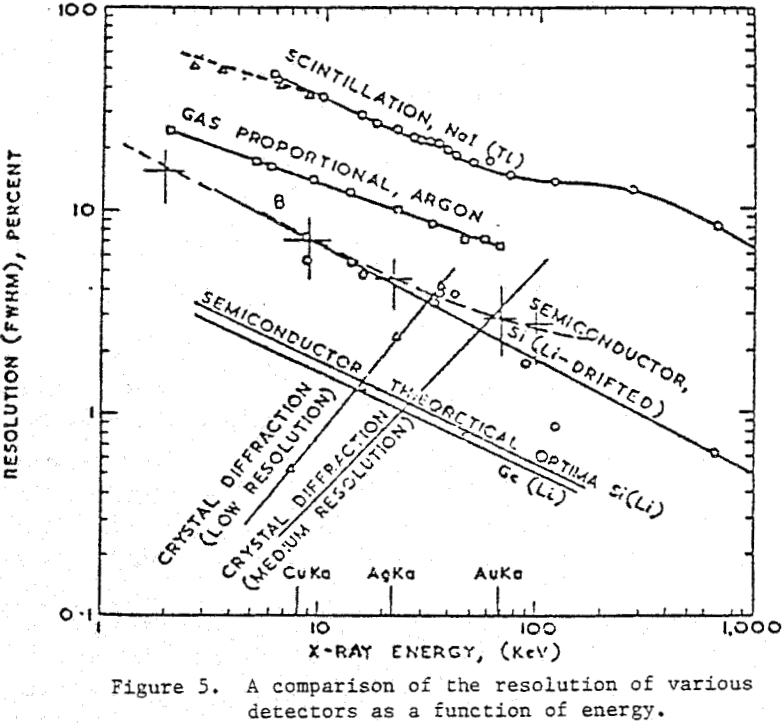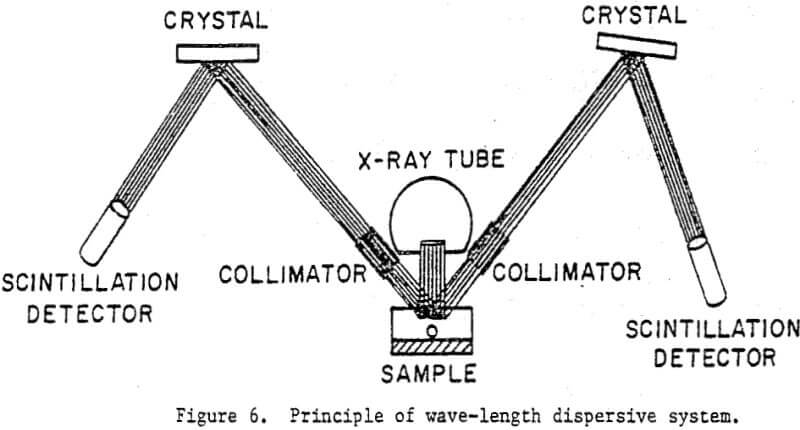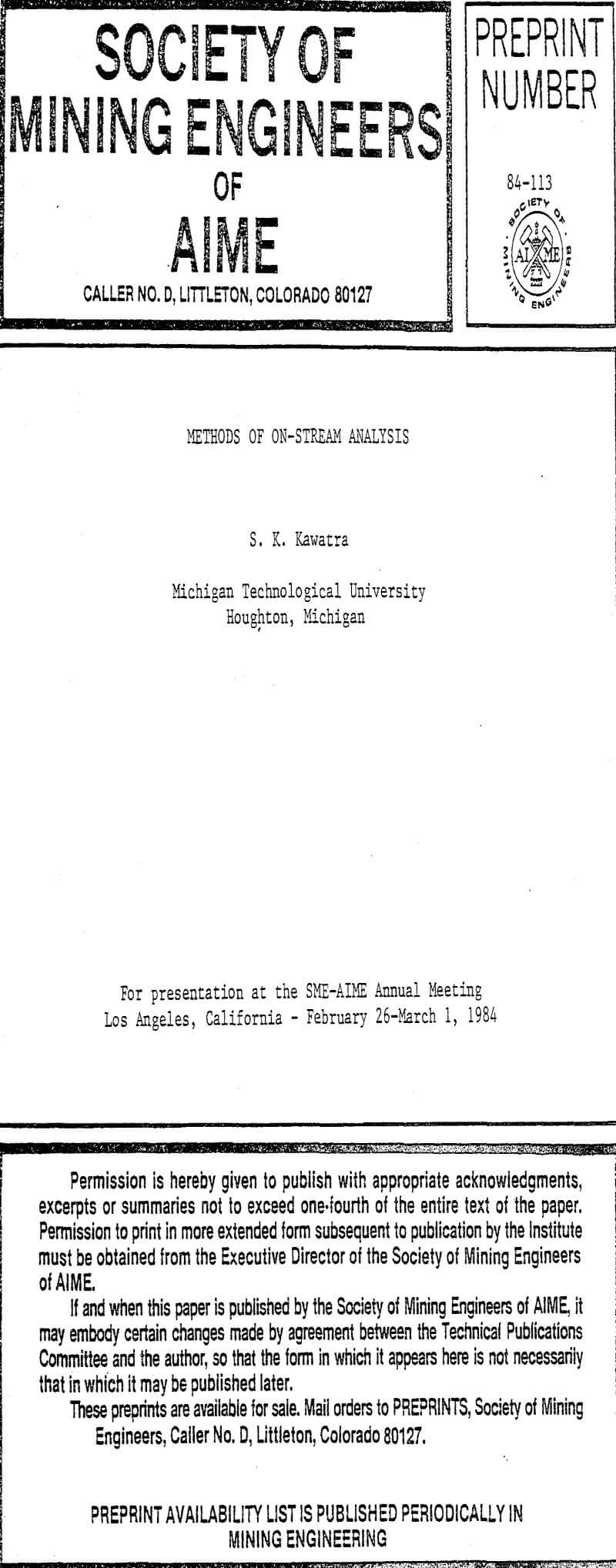Table of Contents
An on-stream analyser cannot be considered in isolation from the mineral process where it is to be ultimately installed. Depending upon the requirements of the process, an on-stream analyser can be designed in several ways. If a feasibility study done on the process shows that several elements in a multi-channel stream are to be analysed with high precision, a very sophisticated on-stream analyser, which would take into account matrix effects etc., would be desirable.
Radiometric Techniques
Radiometric analysis is well known in nearly all branches of science and technology. Such analysis has helped industry to achieve objectives which could not otherwise have been attained. A radioisotope gauge based upon the principle of backscattering of alpha particles was incorporated in the Surveyor V mission to analyse the surface of the moon.
A radiometric analyser can be designed to operate as:
- an adsorption system
- a scatter system, and
- a fluorescent system.
When radiation passes through matter, it loses intensity due to adsorption by the material. Based upon this principle, two types of gauges can be designed, that is, a density gauge or an element analysis probe. In the density gauge the loss in intensity is related to the density of the material. This property of the radiation is discussed in greater detail in subsequent sections. In the element analysis probe, the loss in intensity is related to the percentage of some specific element in the slurry. This technique is well known in the petroleum industry and increased use is being made in the mineral industry.
In the scatter system, source and detector are placed on the same side of the material being examined. When the radiation strikes the material it is partly adsorbed and partly scattered. Again, as with the adsorption system, two types of gauges can be designed.
Any method that causes removal of an electron from one of the inner orbits of an atom and subsequent readjustment of the remaining electrons results in the emission of characteristic X-rays. The emission caused by filling vacancies in the innermost shell is called K. X-rays while that caused by filling vacancies in the next shell is called L X-rays.
Secondary X-ray or gamma ray sources have been used by the mineral industry. The X-ray filters used were nickel for copper determinations (22 mg/cm² thick for concentrates and feeds, 33 mg/cm² for tailings) and (23 mg/sq cm) for all zinc determinations. Errors (percent by weight of wanted element) for above mentioned slurries lie between 0.06 to 0.16.
From the literature it may be inferred that primary and secondary X-or gamma ray mode of excitation is the more common method. In this technique it is possible to isolate the wanted characteristic X-ray from the unwanted radiation. When a suitable source for excitation is not available, a v-x source can be used.
Balance Filters. Two filters with adsorption edges on either side of the characteristic X-ray energy of the wanted element are selected. These filters are mounted between the sample and the detectors. One filter is selected to transmit all the background radiation plus the wanted signal. The other transmits background only. Difference between the signals obtained from the counters is proportional to the concentration of the wanted element.
X-Ray Tube Techniques
An X-ray tube provides a useful source of excitation – a much more intense source than a radioactive isotope can provide. A commonly available X-ray tube is the Coolidge tube. Basically, it is a highly evacuated tube inside which are mounted a tungsten filament cathode and an anode made of tungsten or chromium. The tungsten anode is useful for low energy lines.
In the fluorescent system (the principle of which is the same as the radioisotope X-ray fluorescence), the spectral distribution of characteristic X-rays can be ascertained by a wave-length dispersive spectrometer utilizing a crystal monochromator (for example, LiF or NaCl crystal) or else by energy dispersive system, utilizing a semiconductor detector, coupled to a multi-channel analyzer. Also such a spectrometer is very sensitive to surface finish of the crystal monochromator, to changes in its position relative to the X-ray system. On the other hand, the energy dispersive spectrometer offers better efficiency but poorer resolving power compared to the wavelength dispersive system. Another disadvantage of energy dispersive spectrometer is its inability to operate at high count rates.
Neutron Activation
The neutron is an uncharged particle with very nearly the same mass as the proton. When an element is bombarded with neutrons, it becomes radioactive and decays with the emission of beta or gamma radiations with characteristic energies and half lives. Neutron activation is independent of the electron distribution around the nucleus and is based upon the interaction between a neutron and the target material.
Neutrons can be produced-by bombardment of a material of suitable threshold and cross-section with high energy particles, for example, protons, deutrons, neutrons and even photons. Alternatively, the spontaneous fission neutron source californium-252 can be used. Californium-252 decays for 97 percent by alpha emission and by 3 percent by spontaneous fission. One mg of californium gives 10 9 neutrons per second.
A Comparison Between Radiometric and X-Ray Tube Techniques
An on-stream analyzer using radioisotopes is normally small in size and relatively portable. It is possible to take the analyzer to the flowing stream rather than taking the pulp streams to the sampler. On the other hand, an on-stream analyzer using an X-ray tube is bulky, expensive and requires a central control room. This also necessitates the use of long sampling lines, which add to the cost of the system. Therefore the use of an analyzer for assay or process control work cannot always be justified. Nevertheless, when multielements in a multi-stream are to be analyzed, the cost difference narrows down.
